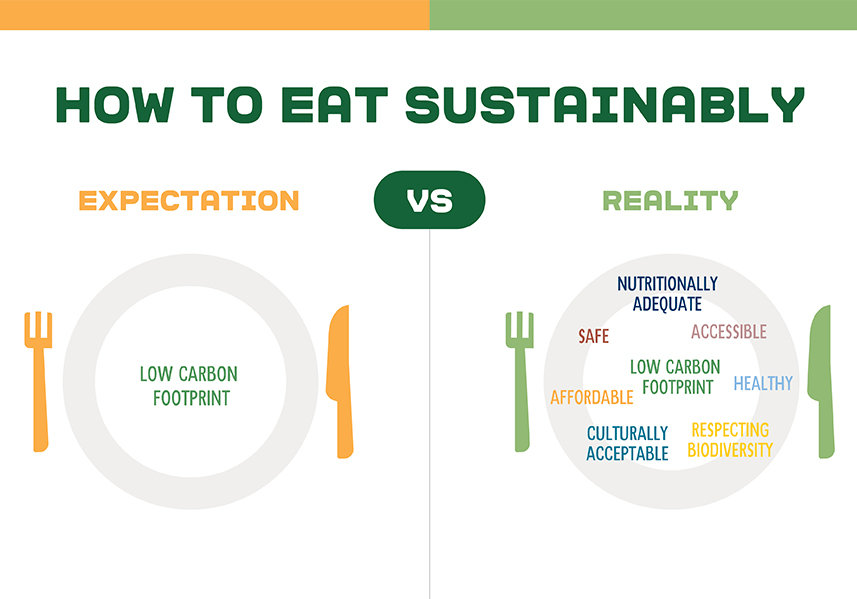Myths and alternative facts, can we do anything about them?
It is a question that I know many people are thinking about. And it was a topic I was asked to speak on at last week’s European Dairy Association’s annual policy conference.
I have spent most of my professional life working for farmers in the Arla cooperative and I have seen the growing influence that alternative facts and myths are having on consumers. So I wanted to use the EDA platform to set out what I saw as the challenge for the European dairy sector and more importantly, what we could do about it.
(Mis)information overload
Consumers are drowning in information and with alternative facts and myths increasing, they are confused about dairy. In Denmark for example, a 2017 Epinion study showed that 55% of consumers were confused by the advice in the public health debate.
This is unfair to the consumer, and in the end, it doesn’t help people make informed choices about their diet.
I am not suggesting that we should clamp down on debating. Quite the opposite in fact. We need to have an open discussion to give people the information they need, but we should stick to facts and be balanced.
Unfortunately this isn’t where things stand today with the public discussion about dairy. The debate has lost touch with reality.
The goodness that is in a glass of milk isn’t clearly understood and many are confused about milk’s contribution to health and nutrition. A survey conducted by Eldelman in 2016, found that 20% of UK consumers believed whole milk contained more than 80% fat. In fact there is 3.5% in full fat milk, 1.5% in semi-skimmed and 0.3% in skimmed.
This confusion needn’t happen.
The great thing about milk is that there are no additives and no processing other than pasteurisation. It is naturally high in nutrients including calcium and protein. And milk contains other vitamins and nutrients that the body needs like phosphorus, B2, B12 and potassium.
As a result, most nutritional guidelines issued by governments and the UN recommend taking dairy products as part of a healthy diet*.
But frustratingly, as a representative of a company in the dairy industry, I am limited in what I can say about the benefits of milk. I am not allowed to make direct links between milk and health benefits, even if they are proven through credible research. On the other hand, our critics can make unsubstantiated claims which only muddy the waters. So if you want to know more about milk, health and nutritional, the European Dairy Association has a great fact sheet developed using extensive research.
Emotional drivers
One factor that is driving this confusion is the emotive nature of anti-dairy campaigning. Our critics are adept at packaging a truth in a communication or use what is to us a relatively small piece in the jigsaw and campaign on it vigorously.
This selectivity can be very misleading.
And they are using channels that go direct to the consumer, like facebook, twitter and even Netflix.
So it is no wonder that consumers are confused by their arguments. As an industry, we can’t hide from the fact that it is having an impact with some consumers considering or moving to alternatives to milk.
Meeting consumer expectations
But there is a more important issue. And that is to cut through all the noise and the myths to really understand what consumers expect, and deliver it.
The relationship between consumers and business is changing. There is a lack of trust of big business. Consumers are demanding more transparency and expect businesses to have clear values that align with their own.
In the food industry, consumers want to know where their food comes from, what is in it, and the impact its production has had on the environment.
It may sound like an intimidating list of demands to live up to, but we should embrace it. The European dairy sector can deliver on these.
At Arla we are proud that as a cooperative we are owned by the farmers who produce our milk. We have control over the value chain from cow to customer. I believe there is no stronger business model than the cooperative to ensure business reflects today’s consumer expectations.
Connect with the consumer
The questions on everybody’s lips at the EDA conference was how do we ensure that misinformation does not drive the dairy sector in future?
First of all, I don’t advocate dropping down to the level of our critics. We will waste energy, resource and ultimately fail, if we aim to shift those ethically opposed to dairy.
And we need to recognise that dairy alternatives are likely to continue having a place in diets. So we need to focus our energy on repositioning milk and dairy in the minds of consumers.
We need to change our focus and look to build a completely new connection for consumers with dairy. We need to reset the relationship to one that is built on trust, transparency and dialogue.
So let’s bring common sense back into the dairy debate. Let the facts speak for themselves and have a dialogue with consumers. Trust they will make informed choices when given the information.
And let’s create excitement about milk. People sometimes forget how good a product it is and how great it tastes. There is simply no comparison between the natural nutritional benefits of cow’s milk verses the milk alternatives. These are the real strengths of milk and we should remind people about them.
* FAO/WHO. Fats and fatty acids in human nutrition. Report on an expert consultation. FAO Food and Nutrition Paper 91. November 10-14, 2008, Geneva. FAO 2010, Rome.



